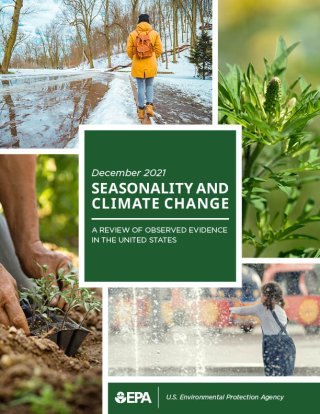Seasonality and Climate Change
Spring flower blooms, summer heat waves, freeze and thaw, growing seasons, and animal migrations are all examples of natural phenomena that follow seasonal patterns. Climate change has altered many of these patterns in the United States—shifting the timing of events like spring snowmelt, creating longer wildfire and growing seasons while reducing the length of time that lakes stay frozen, and more. This report explores evidence of these changes and how they can lead to a range of effects on ecosystems, humans, and the economy.

Published in December 2021, Seasonality and Climate Change: A Review of Observed Evidence in the United States discusses how climate change affects the timing and nature of seasonal events, summarizes changes that have been observed in the United States, and describes the implications of these changes.
- The main report discusses the science behind seasonal events and the ways in which climate change can influence seasonal trends. It uses many years of observations from EPA’s climate change indicators to explore the interconnectedness of seasonal changes.
- The technical appendix describes EPA's evaluation approach and criteria for selecting indicators, and it also provides documentation of sources and methods for the indicators featured in this report.
Seasonality and Climate Change: A Review of Observed Evidence in the United States (pdf)
Recommended citation:
EPA. 2021. Seasonality and Climate Change: A Review of Observed Evidence in the United States. U.S. Environmental Protection Agency, EPA 430-R-21-002. https://www.epa.gov/climate-indicators/seasonality-and-climate-change.
